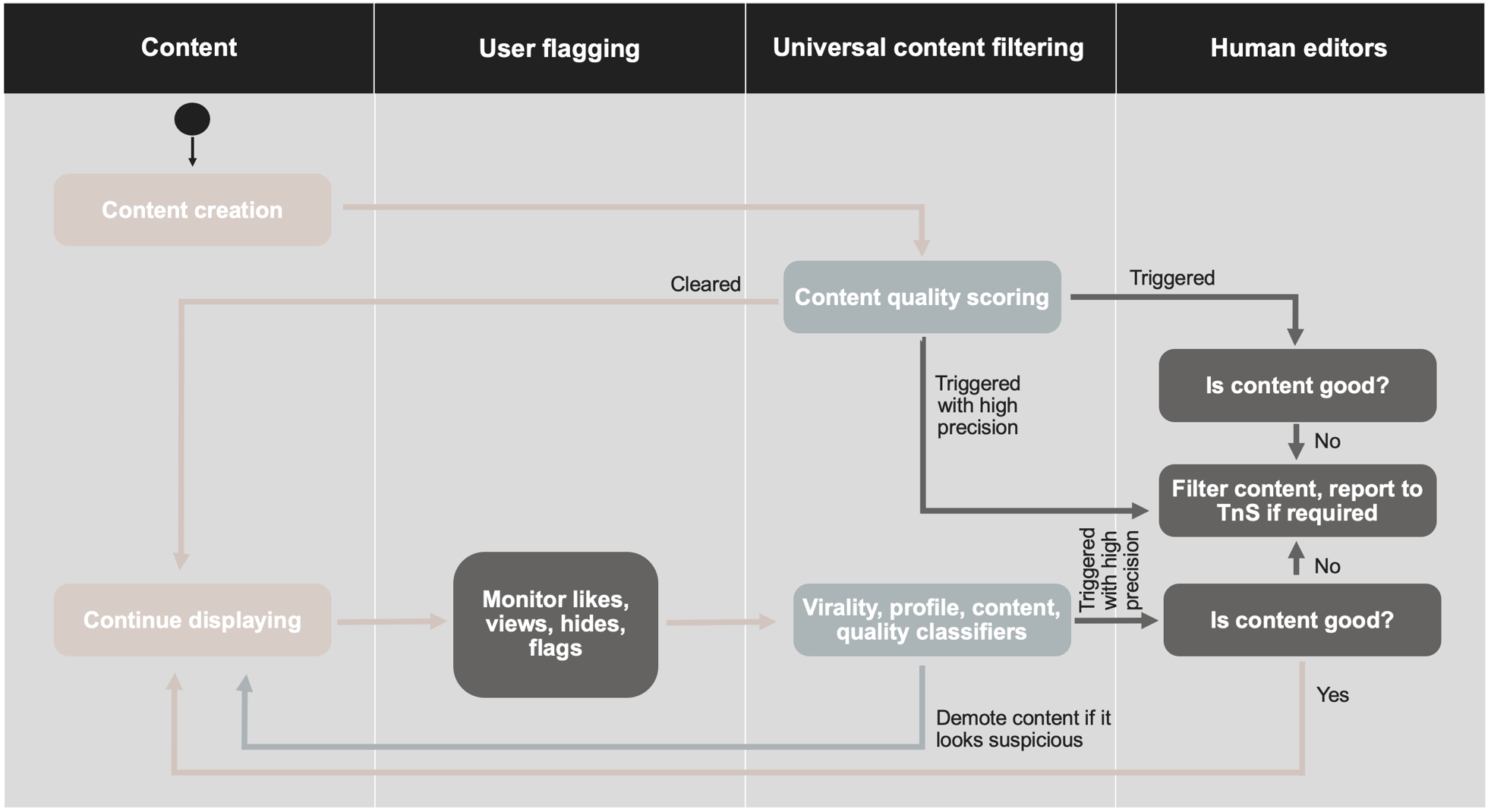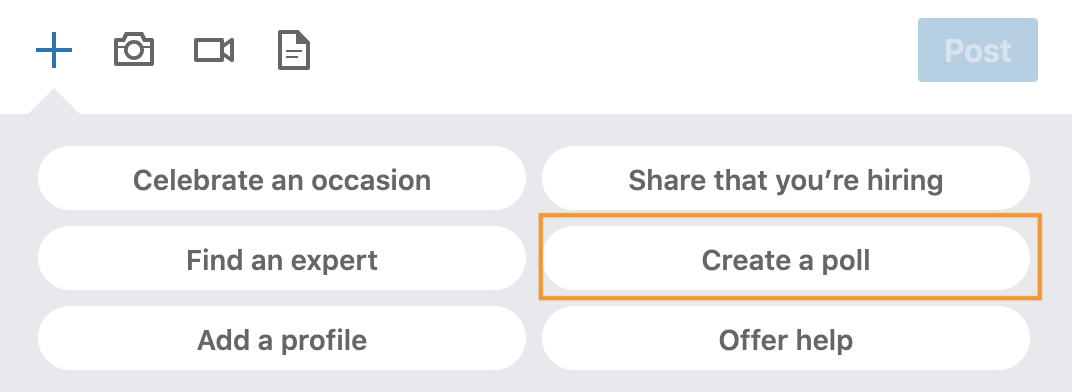- Learn
- The Onlinification Hub
- The LinkedIn algorithm and how to outsmart it
The LinkedIn algorithm and how to outsmart it

With more than 700 million users around the world, LinkedIn is a massive networking platform with an excellent opportunity to represent your company. But if you want to make the most of its potential, you need to know how the LinkedIn algorithm works and how to outsmart it.
How the LinkedIn algorithm works
The LinkedIn algorithm is a very complex system which is influence by both automatic and human actions. Furthermore, the algorithm consists of many different factors. It ultimately determines the amount of reach your content receives in the feeds of others. LinkedIn reviews the credibility of your post, and the LinkedIn algorithm also defines the relevance of the post. Relevancy is rated more than recency, which is why the feed is set by default to 'top' posts. However, members still have the option to switch to 'recent' posts.
The four steps of the LinkedIn algorithm
This graphic, with a four-step process for the spam-fighting strategy from LinkedIn, explains visually how its algorithm works.
 The LinkedIn spam-fighting strategy
The LinkedIn spam-fighting strategy
Step 1: Content
An automatic system immediately analyses your content after you post on LinkedIn. It classifies the content in one of the following categories: spam, low quality, or approved.
Step 2: User flagging
The second stage filter measures the reactions of users. Signals such as likes, shares and comments are rated positively. The more engagement a post receives right away, the better.
If users do not like your post or even mark it as spam 'Report this post' or 'Hide this post', the filter assigns negative characteristics to your post and the algorithm filter it out.

Step 3: Universal content filtering
If users interact with your posted content, this filter takes a closer look at your profile and credibility. The better your post scores, the more visible it becomes. LinkedIn wants to avoid rewarding spam accounts. Either it will be dismissed because it's low-quality content or be shown to more people because it's high-quality content.
Step 4: Human editors
In the final step, LinkedIn employees manually check your post and decide whether a particular post continues to appear in the news feed or disappears again. Those employees regularly feed the LinkedIn algorithm with information about the reasons why a post is relevant and causes corresponding user signals. If the content is working well, then the editors will also send the content to people outside of your network, and it might start to appear in, e.g. 'trending content'.
How to outsmart the LinkedIn algorithm
Create relevant content
Only talking about your product or company isn't going to grab people's attention. Instead, add value and talk about something of interest to your audience.
To create relevant and engaging content, you need to understand the needs and behaviour of your audience.
- Try to make it more engaging and ask a question.
- Avoid just sharing links that you find interesting.
- Also, use polls and ask, e.g. for content ideas. There is less commitment for your audience to participate in polls.

- Don't post too often, avoid offensive posts and only post content that is insightful enough for your audience. Remember: relevance outweighs recency.
Optimise your content for dwell time
In May, LinkedIn published an article on the members dwell time. The LinkedIn algorithm classifies the content of the feed according to how long people consume it.
Content where users spend more time to consume the content performs very well. Therefore, it makes sense to create posts where people spend more time consuming it, such as embedded native videos or documents; offer a checklist or a template.
Use rich media
Members prefer to engage with visual content like videos, images, presentations. Influence and inspire your audience with visuals.
According to this LinkedIn marketing blog article, native video is five times more likely to trigger a conversation between LinkedIn members than other content. LinkedIn prefers native videos over video links from a video hosting platform like YouTube.
Start by uploading native videos, make sure they are no longer than one minute long and include subtitles for best results. Follow the LinkedIn video file requirements. If you add an image to your post can result in up to 98% more comments, according to the LinkedIn business owner guide.
Furthermore, try new formats too. LinkedIn supports certain formats in whose development they have made a technological investment, such as events. Use LinkedIn events and organise, e.g. webinars and invite through LinkedIn.
Add a minimum of three hashtags
Hashtags help other members find the conversations that match their own interests and play an elementary role, among other things already in the evaluation of your post by the LinkedIn algorithm. A maximum of three hashtags per post is recommended. Less than three is a missed opportunity; more than ten is considered spam.
Choose a combination of specific hashtags and hashtags with many followers in order to maximise your reach.
Tag members carefully
Tags can help you get more views when the tagged people do engage with your content. Make sure to tag the right people. LinkedIn will punish you with less reach if tagged people don't respond or remove the tag.
Boost engagement
The more engagement your content receives in the first hour, the better results it will get. Post to which no one responds in the 60 minutes aren't likely to be distributed further by the algorithm and thus don't reach a wide range. Therefore, especially in the first hour, take the time to respond immediately to each comment to stimulate a discussion and thus generate more interaction.
As a company admin provide your employees with the original content and ask to engage with the post. LinkedIn prefers to see comments from all kinds of interactions, as they generate more data and in turn, generate engagement. Ask employees to post updates on their profile pages. But note that employees should not share the company update. Instead, they should take a screenshot and write their own post, add company link (natively) and don't forget to tag the company.
Tip: Train all your employees in onboarding. Some want to support the company but don't know how. In addition, invite your connections to follow and share the company's profile in the private profile.
LinkedIn analytics and new features
As a final recommendation, I suggest that you continuously review your LinkedIn analytics and optimise your post. Try different things and stay up to date with the LinkedIn Marketing Blog.
LinkedIn recently launched the new feature 'stories'. It allows members and organisations to share stories in the form of images and short videos, that last for 24 hours. The new feature is available on the mobile version only and still in its infancy. However, as more companies start to make use of the feature, you don't want your competitors to be one step ahead of you.
Download a compiled presentation
I have compiled all tips on how to optimise your company updates and get the best return on your LinkedIn investment in a PowerPoint presentation. Feel free to re-use this presentation with your own branding to educate your colleagues.
Read the complete Social media guide to learn why social media for businesses is important and how to build a social media plan that will work for your business.

Keep updated on thoughts, facts and knowledge!
Related
-
By Niyat GhebremichaelHow well do you know Instagram? Take the quiz!
-
By Anders BjörklundHow to use LinkedIn: Be active, not just present!
-
By Anders BjörklundThe best time to post on LinkedIn
-
By Stellan BjörnesjöUsing LinkedIn for business intelligence
-
By Anders BjörklundHow to publish on LinkedIn Pulse!
-
By Niyat GhebremichaelHow to create a social media plan



